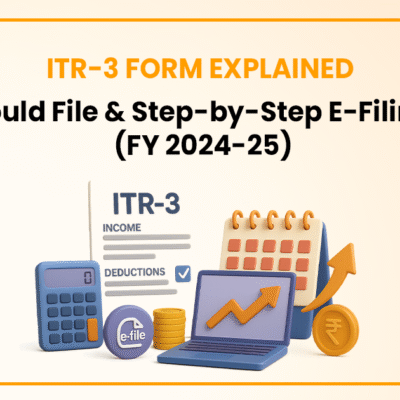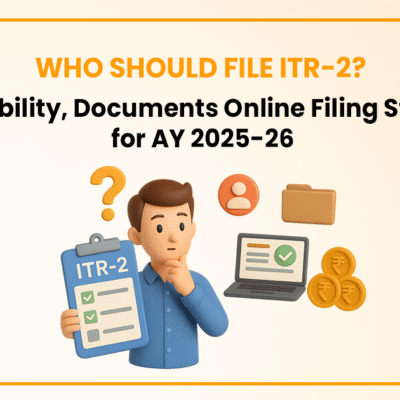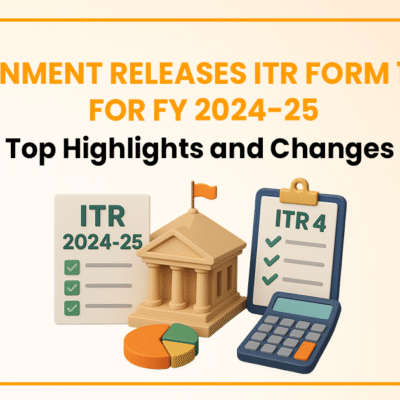Maternity Benefit available to a woman in India as per Maternity Benefit Act, 1961
- December 17, 2022
- Miscellaneous

Women make up half of the population, making up a significant portion of the labor force. The obligations of employment necessitate balancing job, childbearing, and child-rearing responsibilities. The constitutional framework aims to give women equality in all spheres of life. The Maternity Benefit Act, 1961 which follows the model of the International Labor Organization, seeks to provide maternity protection to women in order to promote this goal. The Maternity Benefit Act, of 1961, and its most recent amendment from 2017 ensure that women can actively participate in the workforce after giving birth. The increasing transformation of society makes it necessary for women to avoid becoming exposed during the precarious stage of pregnancy. In order to prevent this from having an influence on women, their productivity, or economic growth, the Maternity Benefit Act guarantees that a woman has equal protection to employment during pregnancy. In this article, we look into Maternity Benefits available to a woman in India as per the Maternity Benefit Act, of 1961.
| Table of Content |
Short Glimpse
Indian legislation requires that the majority of businesses provide maternity benefits to women employees in order to preserve their rights during pregnancy and after childbirth. The Maternity Benefit Act, of 1961, which is applicable to all businesses with 10 or more employees, primarily governs maternity benefits in India. Maternity benefits are provided to women who work in factories with 10 or more employees in accordance with the Employees' State Insurance Act 1948.
The proportion of working women in India is a low 26.97%. As a result, three out of every four women are either unemployed or not actively looking for work.
Let us understand the Maternity Benefit Act, of 1961 first before we look into Maternity Benefits available to a woman in India.
The Maternity Benefit Act, of 1961
Following India's independence, on December 12, 1961, the Union of India approved the Maternity Benefits Act, 1961("Act"). In accordance with the then-applicable international norms, the Act offered conditional benefits for pregnancy, delivery, and problems associated with them. Despite the fact that India was still a developing country and in its 14th year of independence, the Act was quite thorough, and careful attention was devoted to various aspects of factors determining maternity benefits.
In India, maternity benefits are governed by the Maternity Benefit Act, of 1961. The Act applies to all organizations with ten (10) or more workers. The Act states that any woman who has worked for an organization for at least eighty (80) days is eligible for maternity benefits.
The Act states that it is illegal for an employer to fire or dismiss a pregnant employee while she is gone or on account of her pregnancy, to issue a termination notice on a day when the notice would expire while she is away, or to alter any of the conditions of her employment to their disadvantage. The legislation prohibits salary reductions for light tasks assigned to pregnant mothers and pauses for infant nursing.
All companies, including government-owned enterprises and those that hired persons to perform equestrian, acrobatic, and other performances for exhibition in factories, mines, and plantations, are subject to the law.
It also applies to any store or company with ten or more workers. The legislation constituted a substantial advance over the primitive one from 1928 with the addition of provisions for industrial, agricultural, and commercial operations.
Another view is that a rise in the proportion of women working across a wide range of industries necessitated the enactment of legislation that defends and preserves women's rights with regard to maternity care and childcare. Many different women were forced to labor in mines, do arduous activities, and work night shifts in the age before independence, which had an adverse effect on their health and led to prenatal difficulties.
By removing these concerns from women's minds and introducing ideas like paid maternity leaves, the payment of maternity benefits as described in Section 3(h) of the Act, nursing breaks, rights against salary deductions, etc., the Act significantly improved the situations of women.
Scope and Importance of Maternity Benefit Act, 1961
The Act's primary goal is to eliminate the obstacles that women face when they embark on the parenthood journey. The fundamental goal of the Act is to make it possible for women to balance employment and motherhood without having to make concessions. By the end of the 19th century, Germany had established maternity benefits, setting the standard for the rest of the world. The Maternity Protection Convention was developed by the International Labor Organization in accordance with the notion. In the Indian context, N.M. Joshi proposed the Maternity Benefit Bill (No. 31 of 1924) in the Central Legislature in 1929 after seeing the need for maternity benefit legislation.
Prior to this, in the 1920s, the Women's Association of India waged a campaign to obtain maternity rights in the Jamshedpur steel sector. Following that, the Central Government made an effort by passing the Mines Maternity Benefit Act, of 1941, the Employees' State Insurance Act, of 1948, and the Plantations Labor Act, of 1951. These acts eventually made room for the Maternity Benefit Act, of 1961, which was passed by the Parliament with the sole purpose of regulating the employment of women for a specific period before and after childbirth. The ambiguities regarding the various maternity leave periods and the minimum term of service required to be eligible for maternity benefits were the driving forces for the codification.
By providing a woman with complete and healthy maintenance when she is not working, we are able to further the larger goal of safeguarding the dignity associated with motherhood.
Maternity Benefit Act, 1961: Amendment 2017
The 2017 Amendment was enacted in response to the 259th Law Commission Report, which stated:
"The Maternity Benefit Act is revised in conformity with the forward-looking requirements in the CCS Rules, increasing maternity benefits from twelve weeks to 180 days." Maternity benefits should be made mandatory by the state rather than left to the discretion of employers, and they should apply to all women, even those working in the unorganized sector. It is advised that the government develop policies or guidelines outlining minimum requirements for paid maternity leave for women working in the private sector."
Mr. Bandar Dattatreya, Minister for Labor and Employment, tabled the Amendment Bill in the Rajya Sabha. The Bill was proposed after the 44th Session of the Indian Labor Conference (ILC) advocated increasing the length of maternity leave, which was reaffirmed in the 45th and 46th Sessions. This was in addition to the recommendations by the Ministry of Women and Child Development to expand the scope of maternity benefits for women. According to World Health Organization recommendations, there was a need to extend Maternity Leave to preserve the health of both the mother and the child, especially since a kid needed to be nursed for the first 24 months to boost survival rates.
Analysis of important Sections incorporated in Maternity Benefit Act, 1961
The following are the important sections that are incorporated into the Maternity Benefit Act, of 1961:
- Maternity Leave Duration [Section 5(3)]
According to the Act, every woman is entitled to a 12-week maternity benefit. The Act aims to raise this to 26 weeks. Furthermore, under previous laws, a woman may not use the benefit before 6 weeks from the projected delivery date. The Amendment reduces this to an 8-week timeframe. In the case of a woman who has two or more children, the maternity benefit will remain at 12 weeks, which cannot be used six weeks from the projected delivery date. - Adoptive and Commissioning Mothers' Maternity Leave [Section 5(4)]
The Amendment also gives a woman who lawfully adopts a child under the age of three months, as well as a commissioning mother, who is defined as a biological mother who uses her egg to develop an embryo implanted in another woman, 12 weeks of maternity leave. The 12 weeks of maternity leave will begin when the kid is given over to the adoptive or commissioning mother. - Work from Home Possibility [Section5 (5)]
The Amendment includes an innovative provision that allows women to work from home depending on the nature of the task they are to perform. The task might be decided upon by mutual agreement between the employer and the employee. This option does not expire after delivery and can be continued even after delivery for a term mutually agreed upon by the employer and the woman. - Crèche Services [Section11A-(1)]
The Amendment adds a new requirement requiring creche facilities to be within a certain distance. The mother will be permitted four visits to the creche every day, including rest time. - Informing female employees of their maternity leave rights: [Section11-A (2)]
The clause asks for raising awareness among female employees about the maternity benefits that are accessible to them during their employment. - Miscarriage Leave [Section 9]
Following a miscarriage or medical termination of pregnancy, a woman is entitled to a 6-week maternity benefit upon submission of medical documentation. - Leave with pay for tubectomy surgery [Section 9-A]
After submitting the required medical documentation, a lady will be entitled to two weeks of maternity leave immediately following the procedure. - Informing female employees of their maternity leave rights [Section11-A (2)]
The clause asks for raising awareness among female employees about the maternity benefits that are accessible to them during their employment. - Dismissal while absence or pregnancy is prohibited [Section 12]
It is illegal to fire or terminate a female employee who is not present at work in compliance with the terms of this Act. If the employer dismisses or discharges the employee, he is required by law to give her maternity benefits or bonuses. If this is not followed, the injured woman may file an official complaint. - Inspectors' appointment [Section 14]
The government has designated Inspectors to administer and execute the Act. These Inspectors must be Public Servants, as specified in Section 21 of the Indian Penal Code, according to Section 16. - Inspector's authority to order payment [Section 17]
An Inspector may conduct an investigation on his own or in response to a complaint filed by an employee who is dissatisfied. If the allegation is determined to be true after inquiry, the Inspector may order the employer to reimburse the employee. If the employee is dissatisfied with the Inspector's judgment, he or she may file an appeal with the appropriate authorities. - Penalty for employer's violation of the Act [Section 21]
If the employer fails to pay the sum, he will be penalized in line with the Act's requirements. There shall be imprisoned for not less than three months and up to one year, as well as a fine of not less than Rs.2000, which may be increased to Rs.5000. The aforementioned measures demonstrate the legislature's progressive approach to women's rights and the necessity to give women with enough opportunity and room for growth, which they were previously denied. By passing this amendment, the legislature has committed to the spirit of a welfare state.
Maternity Benefits available to a woman in India
Maternity Benefits are benefits granted by a company to pregnant female employees before and after childbirth for a set period of time. Maternity Benefit is now accessible in India under The Code on Social Security, 2020; previously, it was given under The Maternity Benefit Act, 1961. Every woman is entitled to maternity benefits at the rate of the average daily income for the time immediately preceding her delivery and any period immediately after that day.
The following are the Maternity Benefits available to a woman in India:
- Average Daily Wage
Average Daily Wage refers to the average wage for the three months preceding the date of her absence due to maternity. - Prerequisite for Maternity Benefit
The woman must have worked for at least 80 days in the 12 months before the date of her expected birth in an enterprise from which she is claiming maternity benefit in order to be eligible for it. - Maximum Maternity Benefit Period
The maximum duration for which maternity benefits are eligible is 26 weeks, with 8 weeks preceding the projected date of her delivery and the remaining 18 weeks following the date of her delivery. The maximum length for which a woman with two or more surviving children may get maternity benefits is 12 weeks, of which 6 weeks must precede the date of her projected birth and the remaining 6 weeks must follow the date of her delivery. When a woman dies while giving birth, the maternity benefit is only accessible for the days leading up to and including the day of her death.
When a woman who has given birth dies after the date of her delivery, her employer is responsible for the maternity benefit for the whole time for which she was eligible. If the child dies after birth, the employer is liable for maternity benefits for the days leading up to and including the date of the child's death. - Maternity Benefit Payment to Nominated Person/Legal Representative
Payment of maternity benefits in the event of a woman's death shall be provided to the person selected by the woman, and if no nomination has been made by the woman, it shall be made to her legal representative. - Adopting Mother
When a woman adopts a child under the age of three months, she is eligible for maternity benefits for a maximum of 12 weeks from the day the infant is given to the adoptive mother. - Medical Benefit
A woman who is eligible for maternity leave is also eligible for a medical bonus of Rs. 3500/- from her company. - Nursing Break
A mother who returns to work after giving birth is entitled to two breastfeeding breaks until her kid reaches the age of 15 months. - Childcare Services
A woman at an establishment with 50 or more employees is entitled to a creche facility for four visits per day, which includes the rest periods permitted to her. - Invocation of Authority
If a woman is denied maternity benefits, she has 60 days from the date of transmission of the deprivation order to submit an appeal to the appropriate body. - Commissioning Mother
A biological mother who utilizes her egg to make an embryo that is placed in another woman is referred to as a commissioning mother. Maternity benefit is offered to the commissioning mother for a maximum of 12 weeks from the moment the child is turned over to her. After giving birth, a woman may work from home under terms agreed upon by the company and the woman. - Inspector-Facilitator Authority
After receiving a complaint from a woman or nominated person/legal representative that he/she has been denied maternity benefit or any other amount which the employer is obligated to pay under this code to the employee, the Inspector-cum-Facilitator may conduct an investigation and, if satisfied, direct the employer to make payment and pass such order as he deems just and proper. An aggrieved individual may file an appeal against the Inspector-cum-order Facilitator within 30 days to the authority authorized by the competent government, and the order granted by the prescribed authority is final.
Takeaway
Working women would benefit greatly from the Maternity Benefits Act modification. However, the drafters of the amendment failed to take into account the Act's flaws. These deficiencies have been addressed in the proposals. The modification has brought Indian legislation in line with international legislation and implemented the suggestions of the 259th Law Commission report and the 2nd Commission on Labor, but they should continue to research the regulations in other nations. In Singapore, the state shares the responsibility of paying maternity benefits with the employer.
Because the company bears the entire burden, they may be unwilling to hire additional female staff. The Amendment is also not entirely future-proof. This is because, while it established measures to allow workers to work from home, it did not take paternity benefits into account.
Connect to our Experts at Legal Window if you want more information about Maternity Benefits available to a woman in India as per the Maternity Benefit Act, of 1961. Our Experts would be Happy to Help.
LegalWindow.in is a professional technology driven platform of multidisciplined experts like CA/CS/Lawyers spanning with an aim to provide concrete solution to individuals, start-ups and other business organisation by maximising their growth at an affordable cost. Our team offers expertise solutions in various fields that include Corporate Laws, Direct Taxations, GST Matters, IP Registrations and other Legal Affairs.
Categories
- Agreement Drafting (23)
- Annual Compliance (13)
- Change in Business (37)
- Company Law (150)
- Compliance (90)
- Digital Banking (3)
- Drug License (4)
- FEMA (17)
- Finance Company (42)
- Foreign Taxation (9)
- FSSAI License/Registration (15)
- GST (124)
- Hallmark Registration (1)
- Income Tax (214)
- Latest News (36)
- Miscellaneous (170)
- NBFC Registration (8)
- NGO (18)
- SEBI Registration (6)
- Section 8 Company (10)
- Start and manage a business (27)
- Startup/ Registration (134)
- Trademark Registration/IPR (48)
Recent Posts
- Major Upgrade: Breaking Down GST 2.0 September 15, 2025
- New Income Tax Bill 2025 August 27, 2025
- ITR-3 Form Explained: Who Should File & Step-by-Step E-Filing Guide (FY 2024-25) June 25, 2025
All Website Tags
About us
LegalWindow.in is a professional technology driven platform of multidisciplined experts like CA/CS/Lawyers spanning with an aim to provide concrete solution to individuals, start-ups and other business organisation by maximising their growth at an affordable cost.











